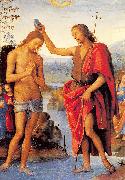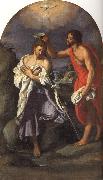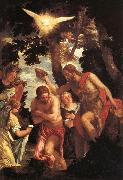
|
Leonardo Da Vinci
|
|||
|
|
|||
|
|
|||
|
The Baptism of Christ new1/ Leonardo Da Vinci15.jpg Painting ID:: 10075 |
1472-1475. Oil and tempera on wood. Uffizi Gallery,Florence | ||
|
|
|||
|
Albani, Francesco
|
|||
|
|
|||
| Italian Baroque Era Painter, 1578-1660 Albani's students included Pier Francesco Mola and Andrea Sacchi. Italian painter and draughtsman. He was a distinguished artist of the Bolognese school, deeply influenced by Annibale Carracci's classicism, who worked in Rome as well as Bologna, painting altarpieces, frescoes and and cabinet pictures. His fame rests on his idyllic landscapes and small mythological pictures, | |||
|
|
|||
|
The Baptism of Christ new3/Albani, Francesco2.jpg Painting ID:: 10739 |
1630-35, oil on canvas, Mus??e des Beaux-Arts, Lyons | ||
|
|
|||
|
PERUGINO, Pietro
|
|||
|
|
|||
| Italian painter, Umbrian school (b. 1450, Citta della Pieve, d. 1523, Perugia). Italian painter and draughtsman. He was active in Perugia, Florence and Rome in the late 15th century and early 16th. Although he is now known mainly as the teacher of Raphael, he made a significant contribution to the development of painting from the style of the Early Renaissance to the High Renaissance. The compositional model he introduced, combining the Florentine figural style with an Umbrian use of structure and space, | |||
|
|
|||
|
The Baptism of Christ new5/PERUGINO, Pietro-732266.jpg Painting ID:: 19845 |
1490-1500 Kunsthistorisches Museum, Vienna. | ||
|
|
|||
|
ALLORI Alessandro
|
|||
|
|
|||
| Italian Mannerist Painter, 1535-1607 Born in Florence. After the death of his father in 1540 he was brought up and trained in art by a close friend, often referred to as his 'uncle', the mannerist painter Agnolo Bronzino, whose name he sometimes assumed in his pictures. In some ways, Allori is the last of the line of prominent Florentine painters, of generally undiluted Tuscan artistic heritage: Andrea del Sarto worked with Fra Bartolomeo (as well as Leonardo Da Vinci), Pontormo briefly worked under Andrea, and trained Bronzino, who trained Allori. Subsequent generations in the city would be strongly influenced by the tide of Baroque styles pre-eminent in other parts of Italy. Freedburg derides Allori as derivative, claiming he illustrates "the ideal of Maniera by which art (and style) are generated out of pre-existing art." The polish of figures has an unnatural marble-like form as if he aimed for cold statuary. It can be said of late phase mannerist painting in Florence, that the city that had early breathed life into statuary with the works of masters like Donatello and Michelangelo, was still so awed by them that it petrified the poses of figures in painting. While by 1600 the Baroque elsewhere was beginning to give life to painted figures, Florence was painting two-dimensional statues. Furthermore, in general, with the exception of the Contra Maniera artists, it dared not stray from high themes or stray into high emotion. | |||
|
|
|||
|
The Baptism of Christ new3/ALLORI Alessandro-483856.jpg Painting ID:: 29870 |
mk67 Oil on panel 65 1/8x38 3/16in | ||
|
|
|||
|
Paolo Veronese
|
|||
|
|
|||
| Italian Mannerist Painter, ca.1528-1588 Italian painter and draughtsman. With Titian and Tintoretto he makes up the triumvirate of great painters of the late Renaissance in Venice. He is known as a supreme colourist and for his illusionistic decorations in both fresco and oil. His large paintings of biblical feasts executed for the refectories of monasteries in Venice and Verona are especially celebrated. He also produced many altarpieces, history and mythological paintings and portraits. His compositional sketches in pen, ink and wash, figure studies in chalk, and chiaroscuro modelli and ricordi form a significant body of drawings. | |||
|
|
|||
|
The Baptism of Christ new3/Paolo Veronese-353489.jpg Painting ID:: 29897 |
mk67 Oil on canvas 77 3/16x52 3/8in Pitti,Palatine Gllery | ||
|
|
|||
|
Also Buy::. For Following Paintings / Artists / Products, Please Use Our Search Online: |












